When the House Rules Committee scheduled hearings for this week on bringing back the congressional practice of earmarking, it probably did not expect an assist from President Trump. The always-unpredictable president surprised congressional leaders last week by recommending they reinstate earmarks.
Uncharacteristically, Trump eschewed hyperbole. He did not suggest that reviving earmarks would ring in a new age in Washington. He did suggest, correctly, that it would be a step in the right direction for our beleaguered Congress. As the Grinnell College political scientist Peter Hanson wrote recently in the Washington Post, “Earmarks offer no magic solution to the challenge of legislating in a polarized environment. But restoring them in some version could give leaders a tool to build bipartisan coalitions by attracting Democrats who might otherwise vote against GOP measures.”
Earmarks are small appropriations for specific congressional districts or projects: a research grant, a runway, a post office, almost anything. They are minuscule as a share of the federal budget, but in the 2000s, members of Congress became obsessed with securing them and their number soared. In response to those and other complaints, in the late 2000s earmarks were reformed to be more transparent and merit-based. Nonetheless, in 2011 a strange-bedfellows coalition of anti-spending Tea Partiers and anti-corruption progressives succeeded in banning them altogether.
Most people who favor earmarks emphasize their importance as a form of political currency. Many important congressional votes are controversial and tough; raising the debt limit, for example, is something every member wants to do but no one wants to vote for. By offering to deliver items on members’ wish lists, leaders can use earmarks to corral crucial votes. Political science research has tended to confirm what common sense suggests: in legislating, incentives matter, and earmarks and other forms of pork-barrel spending help leaders to lead by incentivizing followers to follow—whether the goal is liberal or conservative. Anti-spending conservatives who revile earmarks forget that most federal spending is on autopilot, and that efforts to (for example) rein in entitlements, reform regulations, or otherwise reorient government are difficult without legislative lubricant.
Greasing the skids might be beside the point if earmarking were a corrupt practice. In fact, however, there is ample reason to assume that earmarking is precisely what the founders intended. They explicitly and deliberately placed the power of the purse in Congress’s hands, and they bestowed the power to originate spending bills upon the House of Representatives, originally the only directly elected federal body. They believed that prioritizing public resources was the job of those closest and most responsive to the voters.
If earmarking is corrupt, lock up Crooked Jemmy! In the conception of James Madison and the other founders, trading stuff to forge compromises is how complex, divided societies reach political accommodations. Pork-barreling is part of Congress’s job description. The 1790 compromise that united the United States was a pork-barrel bargain: Madison and Thomas Jefferson agreed to nationalize states’ debts in exchange for Alexander Hamilton’s consent to locate the country’s capital in the South, on Madison’s and Jefferson’s home turf.
When earmarks are banned, the result is not to eliminate preferential or politically motivated spending. Instead, the power of the purse migrates to bureaucrats and appointees in the federal agencies, formulas in entitlement programs, and hacks in the White House. In recent years, scholars of both left and right have bemoaned Congress’s pattern of relinquishing its own powers: war-making power to the president, regulatory power to independent agencies, spending power to entitlements. By chopping its own staff, Congress has reduced its capacity for work and analysis, further weakening itself relative to the executive branch. The ban on earmarks was another such act of institutional self-mutilation.
Strengthening Congress’s relative position might likewise be beside the point if earmarking were, as some have argued, a cause rather than a cure of congressional dysfunction. But no one wants to return to the unreformed chaos of the mid-2000s. President Trump went out of his way to make that point. “We have to put better controls because it got a little bit out of hand,” he said, before adding, “but maybe that brings people together.” (He might be amused to know that President Obama agreed with him in 2010, urging that earmarking be improved but not eliminated.)
It is true that, as the Appropriations Committees’ traditional gatekeeping role declined, manic earmark-seeking became a distraction on the Hill. But that problem got ameliorated. By the time earmarking was abolished, it worked pretty well. Rules required online disclosure of earmark requests, which often looked like detailed grant applications. Only a fraction of requests were approved, and those were frequently vetted by committees of jurisdiction and relevant executive agencies. Looking into the process in 2009, I was surprised to find that
earmark spending today is, if anything, more transparent, more accountable, and more promptly disclosed than is non-earmark spending. Indeed, executive agencies could stand to emulate some of the online disclosure rules that apply to earmarks. … In fact, if you wanted to create a nonbureaucratic, transparent system of rapid-response grants for pressing local concerns, you would come up with something very much like today’s earmarking system (and you’d call it “reinventing government”).
Of course, some earmarks will always be silly or crass (or will appear that way to the people who did not request them). Of course, the process will never be perfect. But opponents of earmarks have had a chance to prove their case. Abolishing earmarks has not made government more effective, more honest, or more trusted.
Earmarking is just one of many factors affecting Congress’s performance, and allowing its return would likely make only a marginal difference in the big scheme of things. But every little bit helps. And any step to reconsider today’s well-meaning but ill-advised jihad against pork-barrel politics deserves welcome.
The Brookings Institution is committed to quality, independence, and impact.
We are supported by a diverse array of funders. In line with our values and policies, each Brookings publication represents the sole views of its author(s).


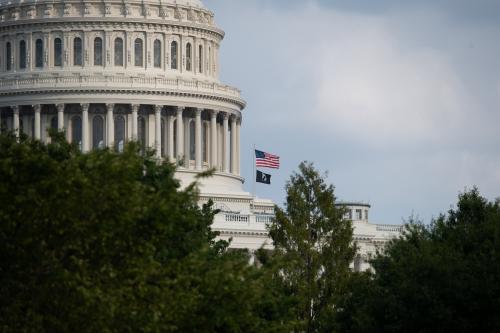
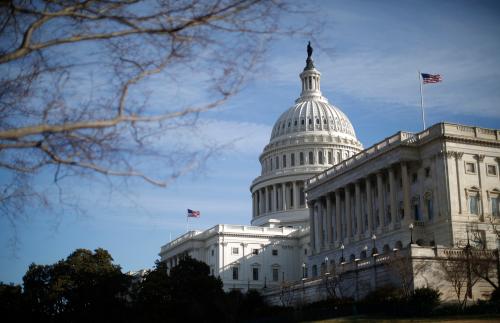
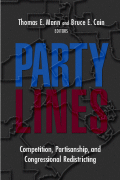
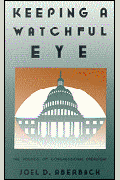
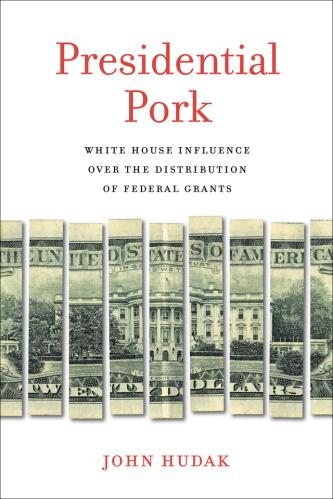




Commentary
Earmarks: The one thing Trump gets right about Congress
January 17, 2018